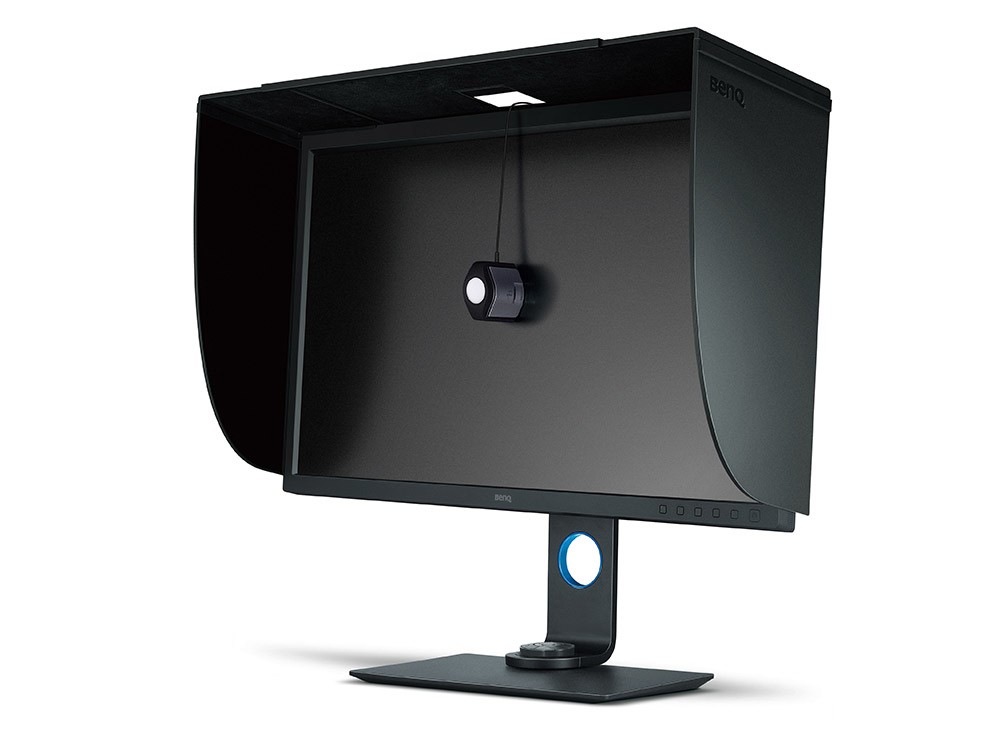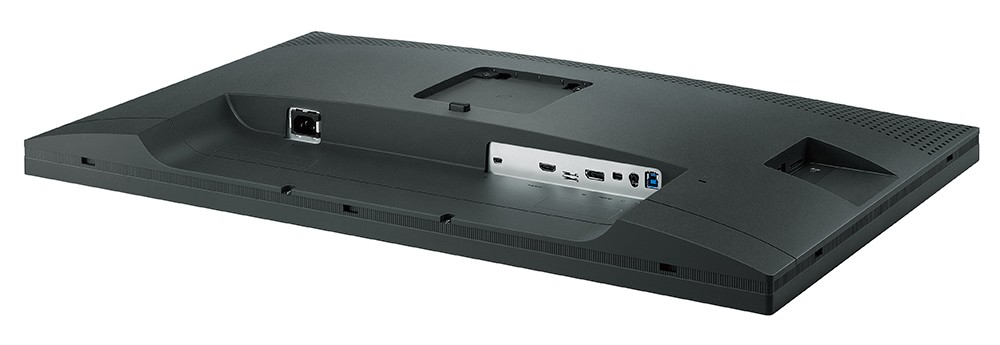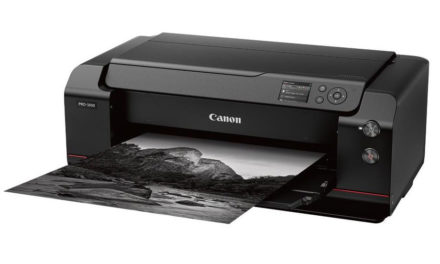Bargain-Priced High-End Display
Review by Steve Baczewski
BenQ’s SW320 is a 31.5″, 4K display that achieves 100% sRGB and 99% Adobe RGB color space, and is for photographers with a critical eye toward detail and color accuracy. The SW320 has a non-glare screen, a built in 14-bit LUT (Look Up Table), and its 10-bit IPS screen architecture allows for displaying more than a billion colors, resulting in smooth gradients and uniform brightness and color when viewing at acute angles.
The 31.5″ of real estate allows viewing multiple windows, giving you plenty of room to arrange the numerous panels in Photoshop. It also provides the unique ability to view files in a 1:1 relationship of screen-to-print size. BenQ includes their proprietary Palette Master Element color calibration software that writes directly to the display’s LUT instead of the computer’s graphic card.
The SW320 is a solidly built display. Its large base connects to a column that clicks reassuringly when the screen is mounted correctly. At the top of the support column is a handle for transporting the SW320. The screen’s connection ports include: HDMI 2, Display- and Mini-DisplayPorts, three USB 3 ports, and an SD memory card slot.
BenQ supplies all the cables and a black hood, which effectively blocks ambient light from hitting the screen and helps to make editing and evaluating images more precise. On the hood’s top is a rectangular opening for passing a colorimeter through and onto the screen for calibration and profiling.

The display has all the standard movements, smoothly rising, tilting, swiveling, and rotating to either a landscape or portrait orientation. The hood adjusts to either orientation. The display’s power and five OSD (onscreen display) control buttons are at the lower-right corner of its gray bezel. The base of the display has a well for housing a USB puck. The puck acts as an alternative to the bezel’s control buttons. It has four numbered pads and an OK button that lets you navigate the menus and switch the screen’s color space from sRGB, Adobe RGB, and B&W. This uniquely lets you see images in sRGB space for Web display, the wider Adobe RGB space if you’re printing, or you can look at a group of thumbnails to quickly determine which would work best as a B&W image. How nice is that?
To achieve the 3840×2160 resolution at 60 Hz, I used the DisplayPort connection. Remember to check your computer’s graphics card to see if it supports 4K resolution. I calibrated and profiled the display with X-Rite’s i1Basic Pro 2 using BenQ’s Palette Master Element software, which writes directly to the display’s LUT. The software has Basic and Advanced modes. The Advanced mode uses more color and B&W patches to increase accuracy and lets you customize the color temperature, brightness, and gamma settings. For printing, I use a color temperature of 6500, gamma of 2.2, brightness at 120 cd/m2, and a contrast ratio around 400:1 to best match the papers to which I print. From the factory, the SW320 is set to a contrast ratio of 1000:1. Surprisingly, Palette Master Element has no contrast adjustment, so I used the OSD to adjust the contrast, and it seemed to remedy the issue.

The software results were very close to my target settings and my test reference prints matched the screen accurately. I used i1’s advanced testing features to measure the uniformity of brightness and temperature across the screen, and my test results showed only slight variation with some minimal falloff at the corners and edges.
Working with the 4K SW320 color-calibrated display is a pleasure and a bit seductive because with its pixel-packed resolution, it reveals so much image detail. ■







Hi Chris,
And thanks for the review.
I own the Benq BL3201PT which is a bit older and the SW320 looks like it is his successor (a bit more expensive though I do not really see the differences with the 3201 on the paper; except for the included hood).
Do you know by any chance if the BL3201PT has had any issues for BenQ to stop its production or maybe I’m missing something w/ the SW320 ?
Thank you.